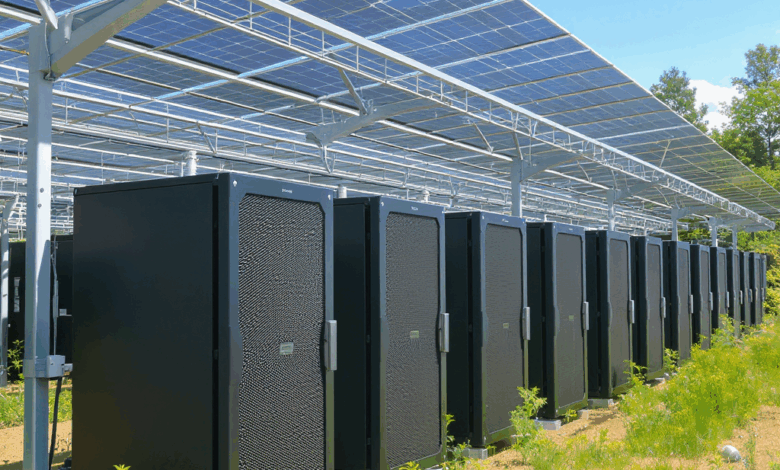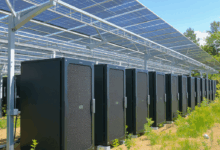Comprehensive Guide to Sustainable Cryptocurrency Mining Solutions

Preparing for Sustainable Cryptocurrency Mining
1. Understand What Sustainable Cryptocurrency Mining Means
Before starting, it’s important to understand that sustainable cryptocurrency mining focuses on reducing environmental impact by using energy-efficient hardware, renewable energy sources, and smart operational practices. This reduces carbon footprint and aligns mining with modern environmental standards.
2. Prerequisites Check
- Basic computer literacy: Ability to use software and hardware interfaces.
- Access to reliable internet: Stable connection for mining pool and blockchain synchronization.
- Budget for equipment and energy setup: Sustainable mining equipment and renewable energy solutions can require upfront investment.
- Suitable location: Preferably a site with access to renewable energy sources (solar, wind, hydro) or cooler climate to reduce cooling costs.
3. Gather Necessary Tools and Resources
- Energy-efficient mining hardware: Latest ASIC miners or GPUs known for high hash rates and low power consumption.
- Renewable energy access or contracts: Solar panels, wind turbines, or agreements with green energy providers.
- Cooling solutions: Consider liquid immersion cooling systems or other advanced cooling technologies.
- Mining software: Reliable mining client compatible with your hardware.
- Monitoring tools: Software or AI-powered analytics to track energy use and mining performance.
Safety Note: Always verify that electrical installations comply with local safety codes and consult professionals when installing renewable energy systems.
4. Plan Your Mining Strategy
- Decide on the cryptocurrency to mine, ideally one that supports energy-efficient consensus mechanisms like Proof-of-Stake (PoS) or hybrid models.
- Choose a mining pool or solo mining setup.
- Determine budget and timeframe for setup and return on investment.
Setting Up and Implementing Sustainable Cryptocurrency Mining
1. Install and Configure Energy-Efficient Mining Hardware
- Unbox and inspect hardware: Check for any damage and confirm all components are included.
- Connect hardware to power and network: Use high-quality cables and ensure stable connections.
- Install mining software: Download the latest version compatible with your hardware.
- Configure mining software: Input wallet address, mining pool settings, and optimize for power efficiency.
Tip: Refer to manufacturer manuals for hardware-specific setup instructions.
2. Integrate Renewable Energy Solutions
- Set up renewable energy source: If you have solar panels or wind turbines, ensure they are properly installed and connected to your mining operation.
- Connect mining rigs to renewable power supply: Use energy management systems to prioritize renewable energy usage.
- Implement battery storage or microgrids: To maintain consistent power supply and reduce reliance on fossil fuels.
Warning: Renewable energy systems may have variability; ensure backup power or hybrid energy strategies to avoid downtime.
3. Deploy Advanced Cooling Methods
- Choose cooling solution: For example, liquid immersion cooling.
- Install cooling system according to guidelines: Ensure proper containment and circulation of cooling liquids.
- Monitor temperature and system performance: Use sensors to avoid overheating and extend hardware lifespan.
4. Optimize Mining Operations with AI and Monitoring Tools
- Install AI-powered monitoring software: This will analyze real-time energy consumption and mining efficiency.
- Set parameters for energy usage optimization: Align mining intensity with renewable energy availability.
- Review AI recommendations regularly: Adjust settings based on reports to maximize sustainability and profitability.
Verifying Success and Troubleshooting Sustainable Mining Setup
1. Verify Hardware and Software Functionality
- Confirm mining hardware is running at expected hash rates.
- Check mining software logs for errors or connectivity issues.
- Ensure mining pool or blockchain sync is stable.
2. Confirm Renewable Energy Integration
- Monitor energy source metrics to verify mining rig is primarily powered by renewable energy.
- Review energy management system reports for consistency.
3. Assess Cooling Efficiency
- Regularly check hardware temperatures remain within safe operating ranges.
- Look for reduction in cooling energy consumption compared to traditional methods.
4. Troubleshoot Common Issues
- Hardware overheating: Check cooling system installation, clean dust filters, or upgrade cooling.
- Power fluctuations: Ensure stable connection to renewable energy, consider battery backup.
- Mining software errors: Update to latest version, reconfigure settings, or reinstall.
- Low hash rate: Verify hardware is functioning correctly, optimize software settings, or consider hardware upgrade.
Recovery Tip: Keep spare parts and backups of software configuration files to quickly restore operations if problems arise.
5. Monitor ESG Metrics and Reporting
- Use built-in tools or third-party software to track energy consumption and carbon emissions.
- Generate periodic reports to document sustainable practices.
- Adjust operations based on findings to improve efficiency.
Checkpoint Summary
- You have prepared by understanding sustainable mining and gathering proper tools.
- Setup includes installing energy-efficient hardware, integrating renewable energy, applying advanced cooling, and optimizing with AI.
- Verification and troubleshooting ensure your mining operation is both sustainable and profitable.
This step-by-step guide empowers you to confidently implement sustainable cryptocurrency mining solutions, balancing environmental responsibility with operational success.
Advanced Energy Management and Hardware Optimization
Dynamic Power Scaling and Hashrate Adjustment
Detailed Implementation Steps
- Employ mining firmware that supports dynamic voltage and frequency scaling (DVFS) to tune power consumption in real-time.
- Configure mining rigs to reduce clock speeds during periods of low renewable energy availability, balancing output and sustainability.
- Use API-enabled hardware to allow granular control over each miner’s power draw and hash rate.
Warning: Aggressive undervolting can cause system instability; always perform incremental adjustments and monitor performance.
Custom Firmware Deployment
Detailed Implementation Steps
- Select custom mining firmware such as Braiins OS+ or Hive OS that supports advanced power management and telemetry.
- Implement configuration scripts to optimize mining parameters for energy efficiency rather than maximum hash rate.
- Regularly update firmware to incorporate latest energy-saving patches and security updates.
Precision Thermal Management with AI-Based Predictive Cooling
Detailed Implementation Steps
- Integrate AI models that predict heat generation based on workload patterns and ambient conditions.
- Automate cooling system adjustments (fan speeds, liquid coolant flow rates) proactively to minimize energy use and prevent thermal throttling.
- Use sensor arrays to collect high-resolution temperature data for AI training and validation.
Advanced Hardware Lifecycle Management
Detailed Implementation Steps
- Implement predictive maintenance schedules based on hardware performance analytics to prevent unexpected failures.
- Rotate mining hardware workloads to balance wear and extend overall lifespan.
- Track energy efficiency degradation over time and plan timely hardware upgrades to maintain sustainability goals.
Scalable Renewable Energy Integration and Grid Interaction
Microgrid Design and Implementation for Large-Scale Mining
Detailed Implementation Steps
- Design microgrid architectures incorporating solar, wind, and battery storage tailored to mining energy profiles.
- Use smart inverters and controllers to synchronize mining loads with renewable generation peaks.
- Deploy energy management systems (EMS) that optimize the balance between on-site generation, storage, and grid draw.
Demand Response and Grid Flexibility Participation
Detailed Implementation Steps
- Enroll mining operations in utility demand response programs to modulate energy consumption during peak grid loads.
- Implement automated control systems that reduce mining intensity or pause operations based on grid signals.
- Leverage blockchain-based energy trading platforms to buy and sell excess renewable energy dynamically.
Advanced Battery Storage Optimization
Detailed Implementation Steps
- Integrate lithium-ion or flow battery systems with real-time charge/discharge control algorithms.
- Use AI forecasting to schedule mining activity in accordance with battery state-of-charge and expected renewable output.
- Perform regular battery health diagnostics to ensure optimal performance and longevity.
Automation and AI-Driven Operational Excellence
End-to-End Mining Operation Orchestration
Detailed Implementation Steps
- Deploy centralized orchestration software capable of managing mining hardware, energy sources, cooling systems, and network connectivity.
- Create automated workflows for startup, shutdown, load balancing, and emergency response.
- Integrate real-time telemetry dashboards with AI analytics for decision support.
Predictive Analytics for Energy and Profit Optimization
Detailed Implementation Steps
- Utilize machine learning models to forecast cryptocurrency price fluctuations, energy costs, and mining difficulty.
- Adjust mining parameters dynamically to maximize profitability while respecting sustainability constraints.
- Implement anomaly detection to identify inefficiencies or hardware malfunctions early.
Automated Compliance and ESG Reporting
Detailed Implementation Steps
- Configure data pipelines to collect and aggregate environmental impact metrics automatically.
- Generate periodic ESG reports aligned with industry standards (e.g., GRI, SASB).
- Use AI-driven insights to continuously improve sustainability metrics and meet regulatory requirements.
Professional Tip: Combining automation with AI-driven insights provides a competitive advantage by enabling real-time responsiveness to market and environmental conditions, ensuring mining operations remain both profitable and sustainable at scale.

Celebrating Your Achievement and Verifying Mastery
Reflecting on Your Accomplishment
Congratulations on completing this comprehensive guide on sustainable cryptocurrency mining solutions! You have developed a solid foundation in understanding energy-efficient hardware, renewable energy integration, advanced cooling methods, AI-driven optimization, and scalable energy management. Your commitment to learning these vital skills positions you at the forefront of environmentally responsible mining practices.
Skill Verification Checklist
- Confidently prepared and set up mining hardware optimized for energy efficiency.
- Successfully integrated renewable energy sources and implemented effective energy management.
- Applied advanced cooling techniques to maintain optimal hardware performance.
- Utilized AI and automation tools to monitor, optimize, and troubleshoot mining operations.
- Demonstrated ability to generate ESG reports and assess environmental impact metrics.
- Embraced advanced concepts such as dynamic power scaling, custom firmware, and microgrid design.
Reflect on this checklist to confirm your mastery and identify any areas for further review.
Continuing Your Learning Journey and Skill Development
Expanding Your Expertise
To deepen your knowledge and stay current in the evolving field of sustainable cryptocurrency mining, consider:
- Exploring advanced courses on blockchain energy consumption and green technology.
- Experimenting with custom firmware and AI predictive models in controlled environments.
- Engaging with research on emerging renewable energy technologies and grid interaction.
- Participating in webinars or workshops focusing on ESG compliance and reporting standards.
Practical Next Steps
- Apply your skills by setting up a pilot mining operation with real-time monitoring.
- Join online communities specializing in green mining to exchange insights and best practices.
- Stay informed of cryptocurrency market dynamics to align mining strategies with profitability and sustainability.
Resources, Support Networks, and Advanced Opportunities
Reliable Troubleshooting and Learning Resources
- Official forums and documentation for mining hardware and software (e.g., ASIC manufacturers, Braiins OS+).
- Renewable energy installation and maintenance guides from trusted providers.
- AI and automation tool support communities and tutorials.
- ESG reporting frameworks and sustainability certification bodies.
Community and Expert Connections
- Engage with platforms such as Reddit’s r/cryptomining and specialized Discord channels.
- Attend industry conferences and networking events focused on sustainable blockchain technologies.
- Connect with mentors or consultants experienced in eco-friendly mining operations.
Embracing Next-Level Challenges
- Investigate large-scale microgrid implementations for mining farms.
- Experiment with blockchain-based energy trading and demand response programs.
- Lead initiatives that integrate sustainability with business profitability in cryptocurrency ventures.
Remember, your journey into sustainable cryptocurrency mining is ongoing. Each step forward enhances your expertise and contributes to a greener, more responsible digital economy. You are now equipped and empowered to make impactful decisions that benefit both your operations and the planet. Keep learning, stay curious, and embrace the innovations ahead!

